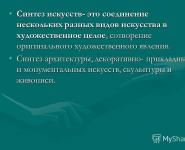Sunstroke: symptoms and treatment
With the advent of summer, cases of heat and sunstroke have become more frequent. However, the cause of such lesions can be not only hot days, but also individual production factors.
Everyone knows that sunstroke is a special case of heatstroke, when an elevated temperature affects the human brain as a result of overheating by the sun's rays. Such lesions can occur in people doing outdoor work, such as construction workers or agricultural workers.
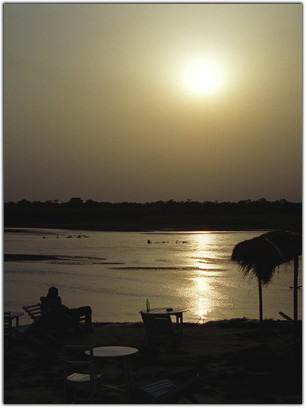 Heat stroke is a consequence of overheating of the whole organism, when the latter is not able to maintain normal thermoregulation. In this regard, heat damage may well happen to workers employed in industries associated with elevated temperatures, for example, in hot shops of steel and chemical industries, in other enterprises during blacksmithing and other work, near furnaces.
Heat stroke is a consequence of overheating of the whole organism, when the latter is not able to maintain normal thermoregulation. In this regard, heat damage may well happen to workers employed in industries associated with elevated temperatures, for example, in hot shops of steel and chemical industries, in other enterprises during blacksmithing and other work, near furnaces.
Signs of heat (sun) stroke are:
- - sensation of pulsation of the temples;
- - redness of the skin, especially the face;
- - an increase in the heart rate to a hundred or more beats per minute.
Also possible:
- - drowsiness;
- - dizziness;
- - noise in ears;
- - nausea;
- - vomit.
First aid for heat or sunstroke
- First, it is necessary to urgently remove the victim from the zone of high temperature and solar radiation to a cold room. If a shadow cannot be provided, cover the head and chest of the victim with your own shadow.
- Secondly, to improve ventilation, it is necessary to remove clothes from the victim. In the absence of shading, only outer tight or tight clothing should be removed.
- Thirdly, it is necessary to sprinkle the victim with water and intensively fan with improvised devices: (folder, clothes, towel). To enhance cooling, you can place the victim in the air flow created by the fan (air conditioner).
- Fourth, apply a cold compress to the victim's chest and head and give him plenty to drink. To improve blood circulation, you can rub the limbs. For rubbing, you can use alcohol and spirits.
If necessary, be prepared to conduct emergency resuscitation, such as chest compressions and artificial respiration. It is advisable to have ammonia on hand. In severe cases, it is imperative to call a doctor, as it may be necessary to administer special medications.
It is known that people with disorders of the heart and circulatory system are more prone to heat and sunstroke. In this regard, in no case should you suddenly dip (immerse) the victim in cold water. A sudden change in temperature can lead to a heart attack, and even to complete cardiac arrest.
When working in hot conditions, use overalls to protect against elevated temperatures, and when working in the sun, be sure to use hats.
All those working in hot conditions should have access to a source of potable water and drink plenty of fluids. In the heat, due to intense evaporation, the body loses it in huge quantities, which leads to thickening of the blood, and this can lead not only to impaired thermoregulation, but also to the occurrence of strokes and heart attacks. To ensure a normal salt balance, it is better to drink mineral water or special water-salt solutions.
When carrying out activities in conditions of heat and in the sun, it is necessary to systematically take small breaks for rest, it is advisable to equip a special room with air conditioning for this.
If possible, install air conditioners or forced ventilation systems at workplaces.
Overheating of the body occurs imperceptibly. Under the action of sunlight or high temperature, metabolic processes are disturbed, a person feels unwell, bordering on fainting. Increased heat generation along with low heat transfer is fraught with serious complications, up to the cessation of cardiac activity. The sooner first aid is provided for sunstroke, the more minimal the consequences.
What you will find in this article:
Signs of sunstroke
Sunstroke is one of the types of thermal effects of external factors on the human body. According to the name, sunstroke is the result of a long improper exposure to the sun's rays in the heat. People endure warm weather in different ways: someone feels great under open sunlight on the beach at noon, when the thermometer has exceeded +40 0 С, and someone will feel unwell already at +25 0 С, having spent a relatively short time on Sun.
Symptoms of overheating and approaching sunstroke may be mild, but you should pay close attention to your well-being if:
- there was a strong thirst, the mucous membrane in the mouth dried up, the tongue became rough;
- sore and spinning;
- tinnitus is heard;
- the person feels weak;
- breathing and heart rate increase;
- sweating is impaired (reduced, absent), which indicates a violation of heat transfer;
- there is nausea, vomiting;
- the skin is hot, a sunburn is formed;
- muscle cramps occur;
- consciousness is confused, fainting may occur
It is not necessary to wait for the manifestation of the full clinical picture in order to ascertain sunstroke. At the first symptoms, it is necessary to provide the victim with first aid.
What to do with sunstroke?
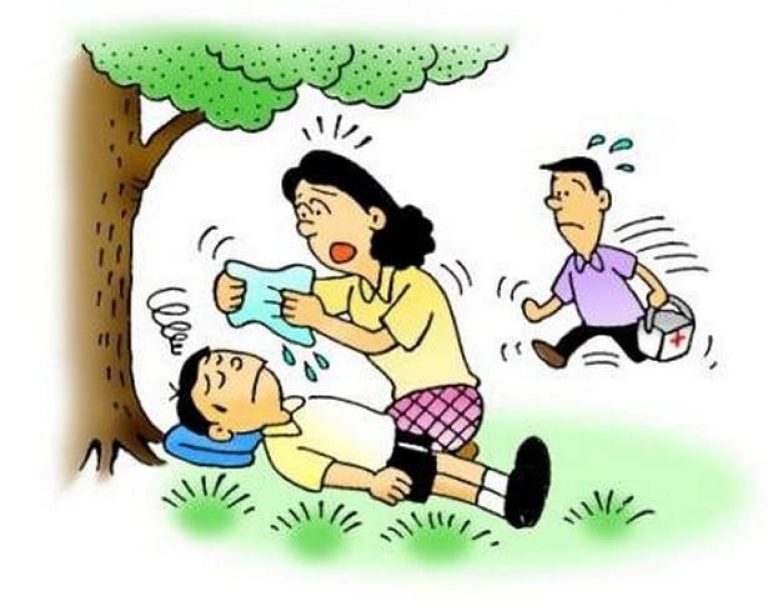
Help at home begins with a call to the ambulance. However, before the arrival of the brigade, you need to help the victim:
- Provide cooling overheated body. For this, a person is transferred from the shade to a cool room with good ventilation, laid on his back.
- If a person is conscious, he needs a cool plentiful drink ( pure water, juice, fruit drink, not hot tea).
- Breathing should be free, so if we are not talking about the beach, you need to free your neck and chest, loosen your clothes, tie, and unbutton buttons.
- If possible, legs and arms are wrapped in towels moistened with cool water. If there is a reservoir nearby, the victim can be lowered into the water in shallow water. It is important that the cooling is not abrupt!
- In the presence of sunburn, a frequent companion of sunstroke, the affected areas should be lubricated with an anti-burn agent (panthenol, bepanthen), if they are not there, with kefir, sour cream.
- Fainting requires special actions, first of all, a person must be brought to consciousness: bring a cotton swab dipped in ammonia to the nose, pat on the cheeks, sprinkle water on the face. In the supine position, the head should be slightly raised.
Risk group

First of all, they are subject to overheating:
- Children. The thermoregulation system in a child is less perfect than in an adult. Mom, in pursuit of a bronze tan, may not notice that for the child the activity of the sun's rays has reached its peak and he is in danger of sunstroke. Symptoms of sunstroke in children are similar to those described above, the child becomes irritable, lethargic, cries, suffers from thirst. Children, especially young children, need medical attention even if sunstroke has been prevented.
- Elderly people whose vessels do not respond as well to an increase in temperature as in their youth;
- Patients with diabetes mellitus and cardiovascular diseases;
- Overweight people;
- People with dehydration;
- People under the influence of alcoholic beverages
What not to do with sunstroke?
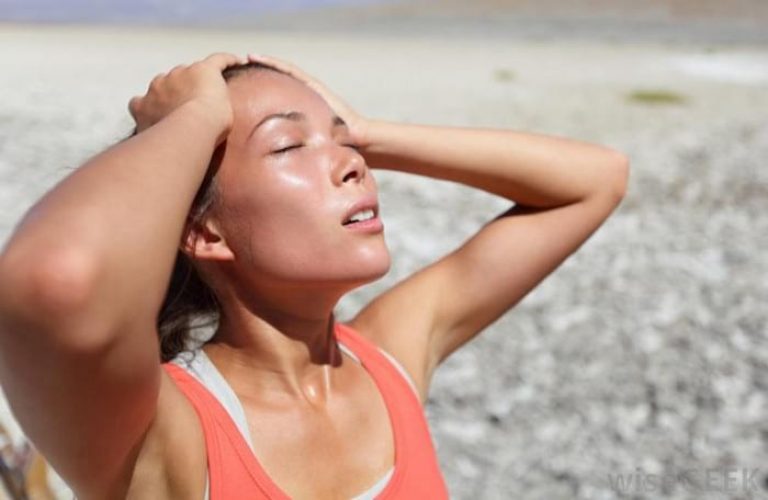
There are a number of prohibitions swinging the victim. The measures are aimed at preventing the worsening of the situation. It is forbidden:
- Dramatically lower body temperature (dipping in cold water, covering with ice), as the blood vessels narrow sharply, and the heart receives a large load that it cannot always cope with;
- Offer medicines to the victim, tk. The reaction of the body under stress can be the most unpredictable. If necessary, any treatment is prescribed by a doctor after examination;
- Give alcoholic drinks, coffee, strong tea, caffeinated drinks
Prevention

- the cause of sunstroke is overheating in the sun, so in the heat you should wear light-colored clothes from light, non-restrictive fabrics;
- do not exercise excessive physical activity during hot hours;
- it is necessary to ensure the supply of a sufficient amount of liquid, giving preference to clean water;
- alcohol must be completely abandoned;
- food should be frequent, but fractional;
- do not spend a long time in the open sun, especially from 12 to 15 noon;
- hats will help to avoid overheating;
- if there is a feeling of weakness, lethargy, you should go into the shadows
What and how to drink in the heat
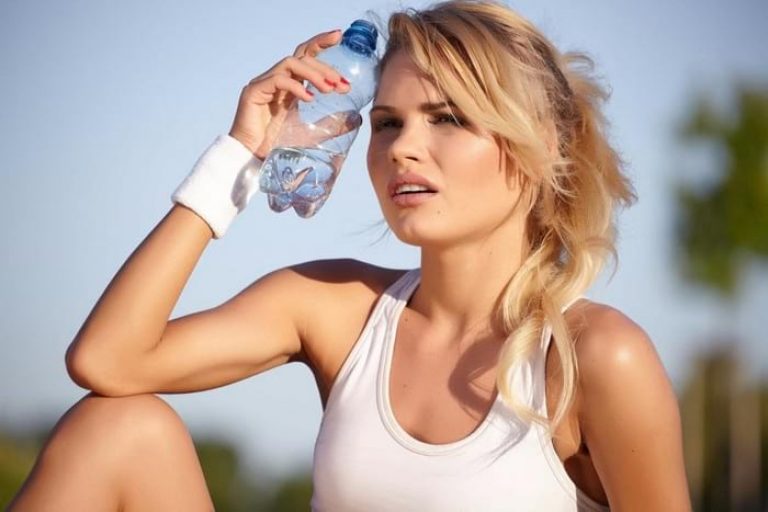
Need to:
- water, pure drinking or slightly alkaline mineral;
- not hot tea with lemon;
- juices with a low percentage of sugar;
- milk and fermented milk products (it is important to pay attention to the terms and conditions of storage, at high ambient temperatures dairy products quickly deteriorate)
It is forbidden:
- carbonated drinks (sweet)
- alcoholic beverages, including beer;
- strong tea, coffee;
- energetic drinks
Sunstroke - a sharp decrease in the rate of metabolic processes, dulling of the activity of the central nervous system under the influence of sunlight and high ambient temperature. You need to know how to properly provide first aid to the victim and follow preventive measures without exposing yourself and loved ones to unnecessary risk.
In medical practice, it is customary to call sunstroke acute painful conditions, which are caused by overheating from prolonged exposure to the sun on a person’s head. This leads to the expansion of blood vessels going to the brain, a lot of blood comes to the head, it can “stagnate”. In some cases, there will be a danger to the nervous system - due to possible ruptures of small vessels, there is also a risk of sudden cardiac arrest. With a particularly severe degree, lethal outcomes should not be ruled out. Sunstroke is a type of heatstroke. The latter are more insidious and dangerous, because patients are far from always able to associate their condition with exposure to high temperature. Everyone needs to know the symptoms and treatment of sunstroke in order to provide the first medical care.
Sunstroke symptoms
Common signs are dizziness, unbearable headaches, redness of the skin of the face. A little later, it may darken in the eyes, nausea is observed, sometimes with vomiting. In some cases, vision deteriorates, nosebleeds begin. When first aid is not provided in a timely manner, a person may simply lose consciousness, the pulse will become faster, shortness of breath is observed, and the functioning of the heart is impaired. In severe forms, a coma develops.
This condition is accompanied by skin lesions: redness, blisters from prolonged exposure to the sun. 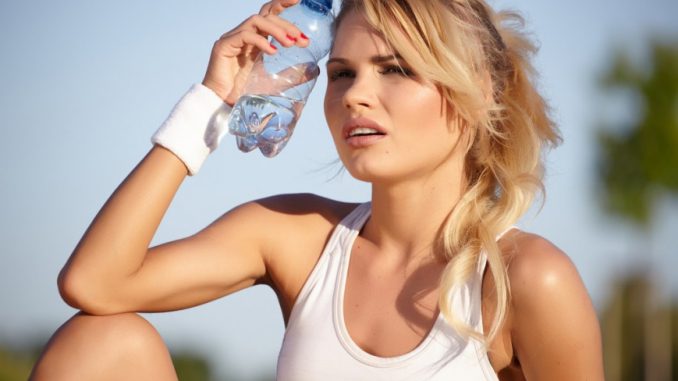 Mild sunstroke can be suspected when:
Mild sunstroke can be suspected when:
- Sudden and severe headache.
- Nausea.
- General weakness.
- Sharp increase in breathing and heart rate.
- Pupil dilations.
It is necessary to help a person to leave a dangerous place and only after that proceed to first aid.
With nausea and vomiting, it is necessary to give the body a position that will not allow you to choke on your own vomit.
With moderate sunstroke, note:
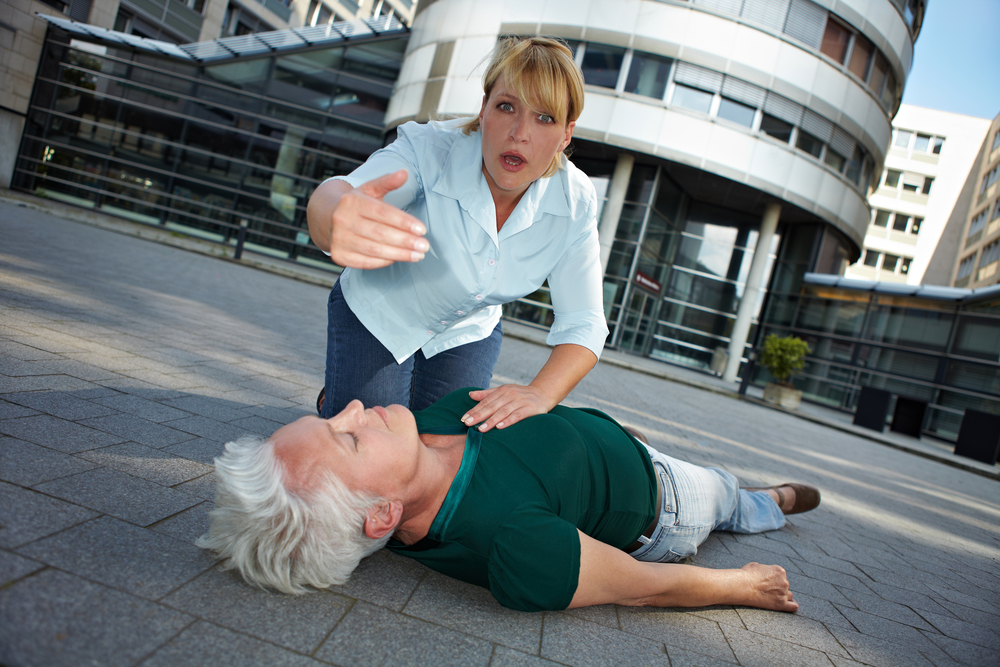
Severe sunstroke is very dangerous, because they come unexpectedly. The face is exposed to hyperemia, eventually becomes pale cyanotic. This condition is reinforced by convulsions, confused consciousness, up to coma, delusional disorders, involuntary separation of feces or urine, temperature above 40 ° C. Death may occur. By the way, the untimely provision of emergency medical care leads to the fact that for about 30% of the victims there was a fatal outcome.
Ways to treat sunstroke at home
Home treatment consists of three points:
- The victim must drink a lot;
- Take measures to cool the body.
- It is necessary to maintain a cool temperature in the room with a fan or air conditioner.
Famous folk recipe: Place a chilled decoction of chamomile flowers on the head in the form of a compress.
With moderate or severe overheating of the body, the cessation of breathing cannot be allowed. Do not allow vomit to enter the bronchi. To do this, turn your head slightly to one side, wrap your finger with bandages, clean the oral cavity with further fixation of the tongue. 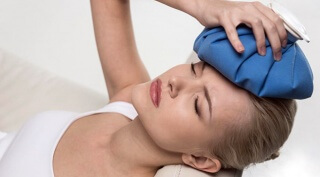
You can wrap the body with wet towels if the temperature has risen to 39 degrees and above. As a rule, rectal (in the rectum) temperature is measured at home.
To provide quality assistance to the victim, you need to know a few more important aspects:
- You can lower the temperature if its value is higher than 38 degrees. This should not be done by elderly sick people with diabetes mellitus, coronary disease and other serious diseases.
- When the victim has lost consciousness, it should begin with an airway check.
- If during the initial examination it is found that the person is not breathing, the heart contraction is not felt, you need to do a heart massage and artificial respiration.
It is important to call a team of doctors in a timely manner, because only specialists will be able to determine the severity of the condition and prescribe the appropriate course of treatment.
Sunstroke in adults
The cause of sunstroke is the rays of the sun, which affect the unprotected head and the body without clothing. Contribute to it can: drinking alcohol in the heat, windless weather with strong stuffiness, excessive food intake. Avoid sleeping in the sun while on the beach - it is very dangerous. Let the neighbors look after you. 
The risk of occurrence of dangerous conditions arises in the presence of such factors:
- high weather humidity.
- In the presence of hypertension, diseases of the endocrine system, heart defects.
- With excess weight.
- Frequent smoking.
- Stress, damage to the nervous system.
Sunstroke in children
Children, especially those under the age of three, are at particular risk, because their body cannot yet independently and properly maintain temperature control.
Babies with lesions of the central nervous system and overweight should be under more careful supervision. In calm weather, you do not need to stay under open sunlight for too long. 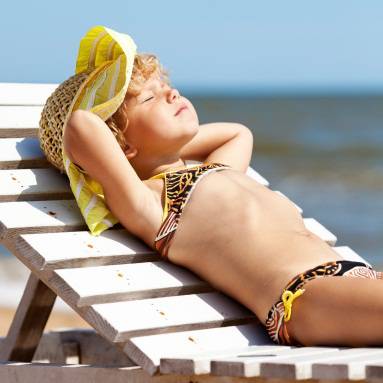
It can manifest itself in a couple of hours after walking in the sun. One of the first symptoms is childish irritability, which is replaced by malaise, lethargy, headache, shortness of breath, sometimes nausea and vomiting, the face becomes red, and the temperature rises.
The sooner help is provided, the less possible consequences from such a state. Be sure to call an ambulance, and before the arrival of doctors, provide first aid. First of all, move to the shade, turn on its side. When conscious - give water to drink, put a wet compress on the forehead. Please note that the water should not be too cold - this leads to vasospasm. With a mild form, further treatment and preventive measures can be carried out on an outpatient basis, but in difficult cases, doctors recommend hospitalization.
Sunstroke in teenagers
The organism of undergrowth reacts a little differently to prolonged exposure to the sun. In addition to the initial signs, against the background of dehydration, the following symptoms develop:
- Stickiness of saliva.
- Dryness in the mouth.
- Very strong thirst.
- Urination is disturbed, urine becomes brown or dark yellow.
Sunstroke in a 10 year old
To prevent the occurrence of sunstroke in children, it is important for parents not only to know their main symptoms, to be able to provide first aid, but also to take some preventive measures.
- Limit the baby's stay outside during the hours when the activity of the sun reaches its maximum (from 11:00 to 16:00).
- Choose clothes according to the weather.
- For a walk, give hats made of light fabrics.
- Give a lot to drink.
- Pay attention to urination - if it has become rare, this is an indicator of dehydration.
- Refuse to eat heavy protein foods in large quantities, pay more attention to dairy products, not forgetting fresh vegetables and fruits.
- Stop exercising under the sun.
- Although be twice a day to provide a cool shower or bath for the baby.
When parents have a clear understanding of sunstroke, they are familiar with the symptoms, the risk of complications is minimized.
Komarovsky's opinion on the treatment of sunstroke
Dr. Komarovsky made a number of recommendations for people who want to prevent the effects of sunstroke. You must remember that a hat is just as important in the heat as it is in the cold. The main difference between heatstroke and sunstroke is that the former overheats the entire body.  completely, and in the second - only the head. Vigorous activity in the sun leads not only to the loss of body fluids, but also salts, heat cramps occur, the doctor notes, and recommends drinking salted water: dissolve a teaspoon of ordinary salt in a liter of water. The ideal option is to buy a special oral rehydration solution at the pharmacy.
completely, and in the second - only the head. Vigorous activity in the sun leads not only to the loss of body fluids, but also salts, heat cramps occur, the doctor notes, and recommends drinking salted water: dissolve a teaspoon of ordinary salt in a liter of water. The ideal option is to buy a special oral rehydration solution at the pharmacy.
After the onset of severe weakness and dizziness, a specific condition develops, called heat exhaustion - the body cannot sweat, which is dangerous for loss of consciousness, the specialist emphasizes. In case of loss of consciousness, even for a short time, it is necessary to contact the doctors for qualified assistance.
As a first aid, Komarovsky recommends not only moving the victim to a cool room, putting a compress on his forehead. Ice can also be used by wrapping it in a dry towel. It is good to have cooling bags in the first-aid kit, but if they are not, cool water, in which you need to moisten a clean towel, will help out. Compresses must be placed not only on the head, but also near the armpits and in the groin area.
The doctor draws attention to the fact that tea and coffee should not be given to a victim of sunstroke, because caffeine has a diuretic effect, and there is already a lack of water in the body. Give compotes or salt water. Means to reduce the temperature should not be given - after moving to a comfortable cool place and receiving the missing fluid, the temperature will return to normal on its own. Rubbing the body is also not necessary, especially with mixtures that contain alcohol.
According to Komarovsky, sunstrokes develop due to human carelessness, because many simply underestimate the danger that the sun can carry.
Young children and people over the age of 65 are most at risk. In older people, pressure often rises, which can only aggravate the situation. Therefore, be interested in how elderly relatives feel in the summer.
Publication date: 04.10.2012
Sunstroke or heatstroke is a very unpleasant and dangerous thing for health. And although it is autumn in the yard, we decided to tell you about this danger, because many go on vacation to warm lands not only in summer...
Sunstroke is a type of heat stroke. You can also get heatstroke in the shade (if you're somewhere in the Sahara). And you can get sunstroke if you do not protect your head from direct sunlight. Those. enough to wear a hat, and you can forget about sunstroke. However, from time to time we are all victims of sunstroke to one degree or another.
Signs of sunstroke:
1) Weakness. The more severe the case, the stronger the weakness will be. You may also feel mild drowsiness, and in severe cases, fall into a coma.
2) Headache. Again, the more severe the case, the worse the headache.
3) Nausea. In mild cases, it can be mild nausea, and in severe cases, it can be uncontrolled vomiting.
4) Increased heart rate and respiration.
5) Pupil dilation. In general, the pupils constrict in the light and dilate in the dark. If you are with friends on the beach, and one of them has dilated pupils, then it is clearly not in the dark ...
What to do?
If a person has symptoms of severe sunstroke (fainting, severe headache), you need to call an ambulance. If a person has mild signs of sunstroke, then you can not go to the doctors. However, in both cases, it is necessary to provide first aid, which boils down to the elimination of thermal effects.
1) Lay the person in the shade, or take them out of the heat affected zone. If you are on the beach, then just go to the shade or to the nearest store.
2) It is necessary to remove clothes from a person. Naturally, it is not necessary to undress a person completely, the main thing is to reduce the effect of heat on the body.
3) If a person has a strong weakness, then you need to periodically give him ammonia to inhale. Otherwise, the patient may stop breathing.
4) Put a cold compress on your head. And moisten the body with cold water. You can take a sponge or cloth soaked in cold water.
5) provide air access, fan the patient.
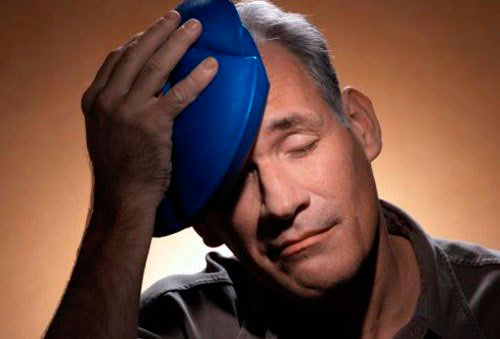
The moment when the patient begins convulsions, hallucinations, delirium is especially dangerous. In general, it is better not to bring such a case at all, but a couple of tips can be given. First, you will probably have to do artificial respiration.

If you don’t know how, then it’s better to learn in advance. Second, if ambulance travels too long, then if you have your own car, you yourself need to take the patient to the nearest medical center.
What Not to Do
Never give the patient alcohol. Surely, someone will want to drink a "cold beer" during a sunstroke. Alcohol will only make matters worse.
Secondly, you can not immerse a person in a cold bath, or under a cold shower. The fact is that with a sharp cooling of the body, blood vessels begin to narrow sharply. Because of this, the body begins to experience unimaginable stress. A person's heart can easily stop. Also, the patient will begin to have even more headaches, up to loss of consciousness. If you want to help, it is better to place a person under a warm shower (27-28 degrees).
Thirdly, you should not try to give water to a person if he has lost consciousness. So he can choke. In principle, an unconscious person can be given water, but only doctors can do it correctly.
That's all. Keep an eye on your health, otherwise a vacation on the beach will turn into a vacation in the hospital. In addition, the above first aid methods can be used for heat stroke.
Thank you for your attention!
Latest Health Tips:
What habits will help you live longer?
How to train if there is no willpower
How to cure a cold
What you need to know about running
What is acid-base balance and why to observe it
What to do if your knees are cracking
In medicine, the concept of "sunstroke" is defined as a painful condition provoked by overheating of the body, in particular the brain, due to exposure to ultraviolet rays directly on the head. This disease is a variety and these two phenomena have similar symptoms and causes of development.

Sunstroke is the effect on the body of a large amount of heat, which the body is not able to control and cannot neutralize it. In such a situation, the process of cooling the body is disrupted, which provokes a number of negative consequences. When sunstroke changes blood circulation, sweating, there is an accumulation of free radicals in the cells of organs and tissues, which leads to intoxication of the body and deterioration general condition health. The consequences of the disease can be extremely unpleasant and dangerous, in particular, if a person has diseases of the cardiovascular system, a hypertensive crisis or cardiac arrest can occur.
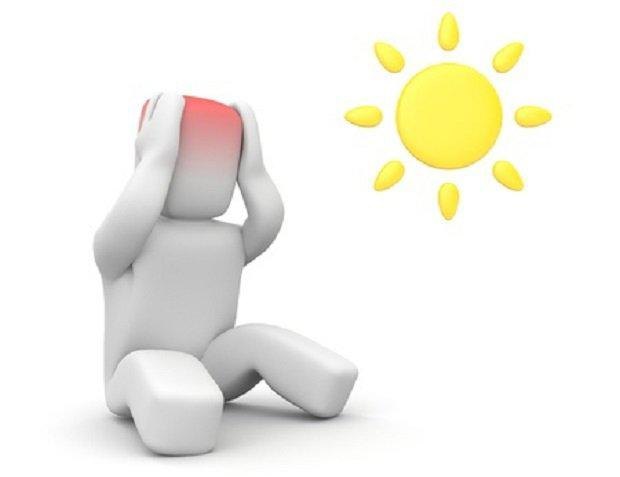
Everyone can get a sunstroke, without exception, but the risk of getting it increases significantly if the following factors are present:
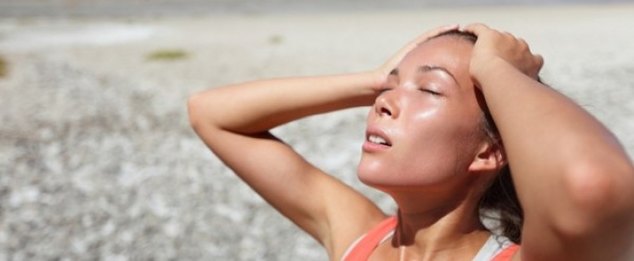
Sunstroke symptoms
There are three stages of sunstroke, each with different symptoms and first aid. As a rule, the disease is always accompanied by weakness, vomiting and impaired stool, as well as dizziness and headache. If timely assistance is not provided, a coma may occur, and in especially severe cases, death is observed.
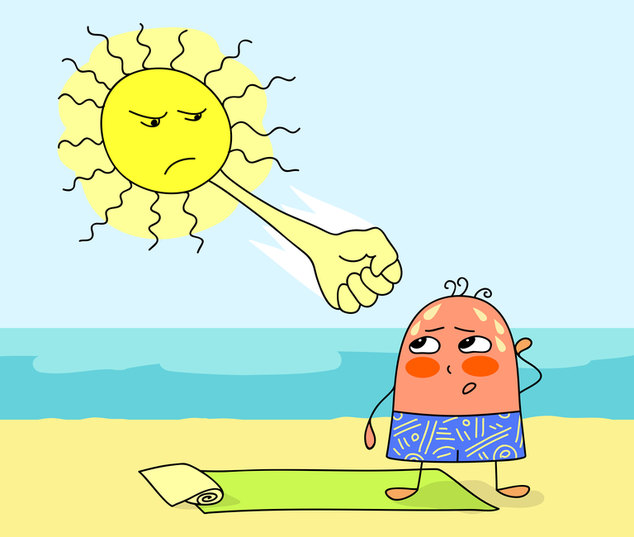
Signs of mild sunstroke:
- weakness of the body, deterioration in general well-being;
- severe smut pain;
- nausea, which is often accompanied by vomiting;
- increased heart rate, pulse, and breathing;
- pupil dilation.

Symptoms of moderate sunstroke:
- adynamia - decreased motor activity, unsteady gait;
- headache accompanied by vomiting and nausea;
- dry mouth, constant feeling of thirst;
- complete lack of appetite;
- nose bleed;
- an increase in body temperature to a mark of 40 ° C.
A severe form occurs suddenly if first aid was not provided in a timely manner. First of all, the shade of the skin changes, it acquires a pale cyanotic color. Consciousness worsens, hallucinations are often observed. The motor activity of body parts and individual organs is disturbed, which provokes the appearance of convulsions, involuntary excretion of feces and urine. Body temperature reaches 41 ° C, which causes a number of complications. In 30% of cases, a fatal outcome is observed.
First aid for sunstroke
It is extremely important for a person who has signs of sunstroke to provide first aid in order to alleviate his condition, maintain health, and possibly life. Despite your knowledge and skills, you should immediately call an ambulance. It is extremely difficult to independently establish the degree of the disease and assess the level of impact, and this can be a decisive factor in conducting therapy and providing proper assistance.

Rules and sequence of first aid:
- Move the victim to a dark, cool place with good air circulation.
- Help the person to lie down with a roll of clothing under their head. If nausea or vomiting is observed, the head must be turned on its side to ensure the normal discharge of vomit.
- Elevate the victim's legs by placing clothing or a bag under the ankles.
- Remove clothing, especially clothing that restricts movement and makes breathing difficult.
- Give the victim cool water to drink, the more the better.
- Apply a cold compress to your face.
- If the victim has lost consciousness, a cotton swab soaked in ammonia should be brought to the nose.
![]()
To recover from a sunstroke, the victim needs several days of rest (in severe cases, a person is placed in a hospital until complete recovery). This time will be required to normalize blood circulation, improve the functioning of the nervous system and neutralize adverse effects.
Disease prevention
To avoid sunstroke, take preventive measures:

Sunstroke is a dangerous painful condition that can lead to a number of unpleasant consequences. To alleviate the condition of the victim, it is important to know the rules of first aid. In order to prevent sunstroke, you should take preventive measures and follow the rules of behavior in the sun.
